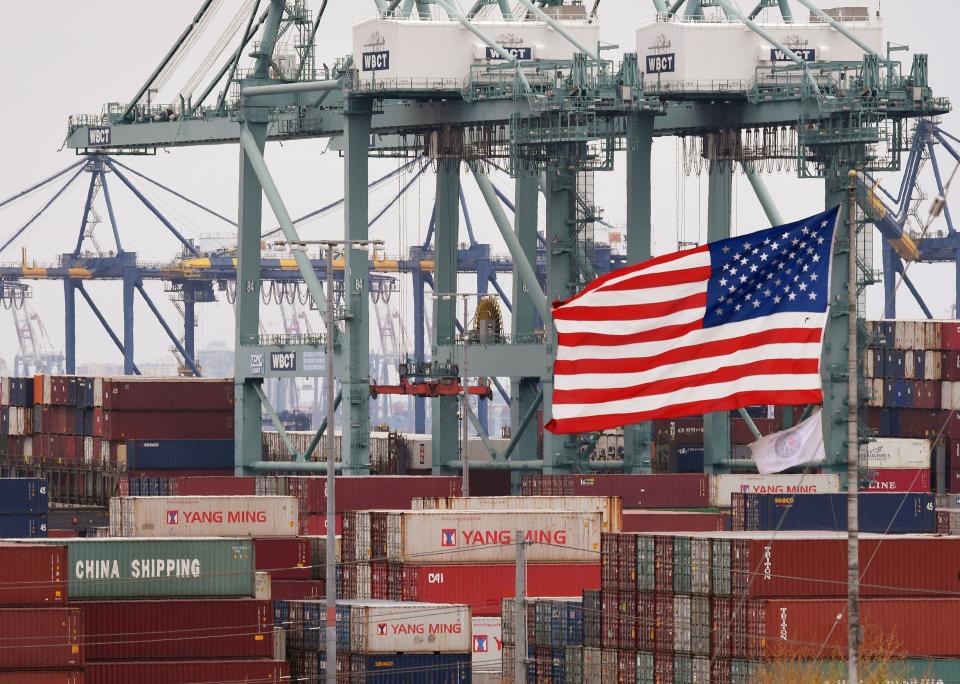Trump’s low threshold for stock-market pain
President Trump’s protectionist trade policies are harming the US economy. But a powerful corrective – the stock market—will limit the damage. And Trump’s recent behavior reveals he can only bear modest market declines before he seeks a way to intervene and push stocks back up.
Investors have repeatedly registered instant disapproval when Trump has intensified his trade war, by selling stocks and pushing prices down. This gets Trump’s attention. He views the stock market as a grade on his presidency, claiming his policies are the reason stocks have risen since his election.
Yo-yoing stock prices amid the latest trade escalation with China now give us a pretty clear idea what Trump’s threshold for investor pain really is. Stocks tumbled after Trump announced on May 5 that he would raise tariffs on Chinese imports. When he actually did it, on May 10, the selloff continued, with the S&P 500 index down more than 4% from levels before the new tariff announcement.
Then Trump intervened. Midday on May 10, he said talks with China remain “constructive,” as did Treasury Secretary Steven Mnuchin. Trump also said his relationship with Chinese president Xi Jinping was “strong.” Markets interpreted those comments as a sign a deal was still possible and the new tariffs might not last. Stocks turned around and ended the day positive.
The optimism didn’t last. There was another trade-related selloff May 13, when China said it would retaliate with higher tariffs on U.S. exports to China. The S&P 500 fell 2.4% for the day, bringing it close to a 5% loss for the six days since Trump announced the new tariffs.
The next day, Trump fired off 10 tweets specifically about the trade dispute with China, making it his top Twitter topic of the day. Trump announced a new plan to aid farmers hurt by the retaliatory Chinese tariffs. He encouraged Americans to buy products from a “non-Tariffed country instead of China.” He also said, “when the time is right we will make a deal with China,” which gave markets another excuse for optimism. Stocks rose 0.8% that day.
Sensitive to declining stocks
Trump is reassuring markets with words, not actions, and markets aren’t assuaged long by unkept promises. So Trump will have to deliver a real deal at some point, to keep markets buoyant. But there’s reason to think he will, because he’s surprisingly sensitive to declining stocks.
His threshold for pain seems to be around a 5% drop in stock prices that can be linked with his trade wars or other policies. Trump claims the outcome of his trade wars will be good for the U.S. economy in the end, and worth some short-term pain. But many economists disagree, and Trump is showing reluctance to go beyond incremental tariff increases and take bigger steps that could send markets into a deeper tailspin.

Trump, for instance, has reportedly delayed a plan to slap a 25% tariff on auto imports, which is supposed to be part of his strategy to negotiate better trade terms with Europe and other countries. If Trump imposed those tariffs, it would add $2,450 to the average cost of a car, cut car sales by about 1.2 million per year, and kill 197,000 jobs, according to the Center for Automotive Research. So, like his other tariffs, they’d hurt the U.S. economy in order to help it, most likely doing more harm than good, on balance.
Probably bluffing
Trump, in other words, is probably bluffing about imposing those tariffs, because stocks would anticipate the economic damage and probably plunge. The same is probably true for Trump’s threat to hit another $300 billion worth of Chinese imports with a 25% tariff, which would more than double the economic cost of the Chinese tariffs he has already imposed. Investors, at the moment, are betting Trump won’t do that, which is why stocks have recovered a bit from the May 5 tariff swoon. But they’ll go down again if Trump tariffs up some more.
Trump used to brag about the stock market, but he hasn’t lately, because there hasn’t been that much to brag about. The Trump trade war began on Jan. 22, 2018, when his administration imposed tariffs on imported washing machines and solar panels.
From Election Day 2016 to Tariff Day 2018, the S&P 500 rose by 31%. Since then, Trump has rolled out tariffs on steel and aluminum imports from many countries, hit Chinese imports with four rounds of tariff hikes, and threatened worse. And since Jan. 22, 2018, the S&P has risen just 1.6%. Trump’s trade war isn’t the only reason for that subdued performance, but it may be the biggest.
Some investors think part of Trump’s reelection strategy is to wrap up his trade disputes by 2020, removing tariffs and boosting stocks. That might work, but it assumes there’s no lasting damage from the trade disputes, and also that markets respond to Trump’s lever-pulling in a predictable way. They have so far—by registering their displeasure with tariffs—but these might not be actions undone by simply pushing in the other direction.
Confidential tip line: [email protected]. Encrypted communication available. Click here to get Rick’s stories by email.
Read more:
Meet the 2020 presidential candidates
How Trump is blowing it with voters
Why Medicare for all is doomed
The stock market liked these presidents better than Trump
Joe Biden’s economic views need a major update
Rick Newman is the author of four books, including “Rebounders: How Winners Pivot from Setback to Success.” Follow him on Twitter: @rickjnewman
